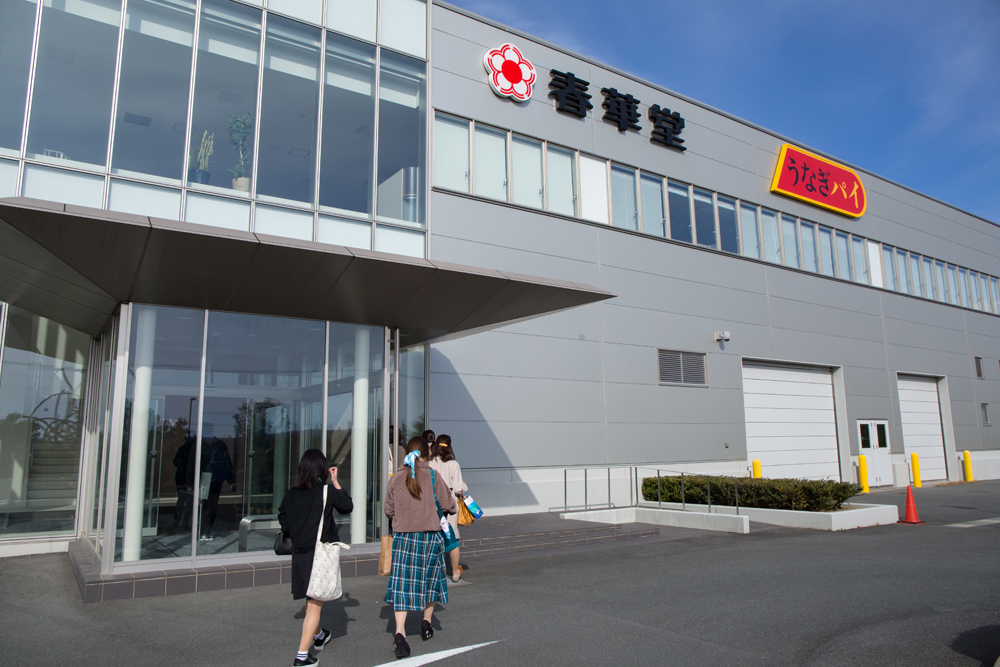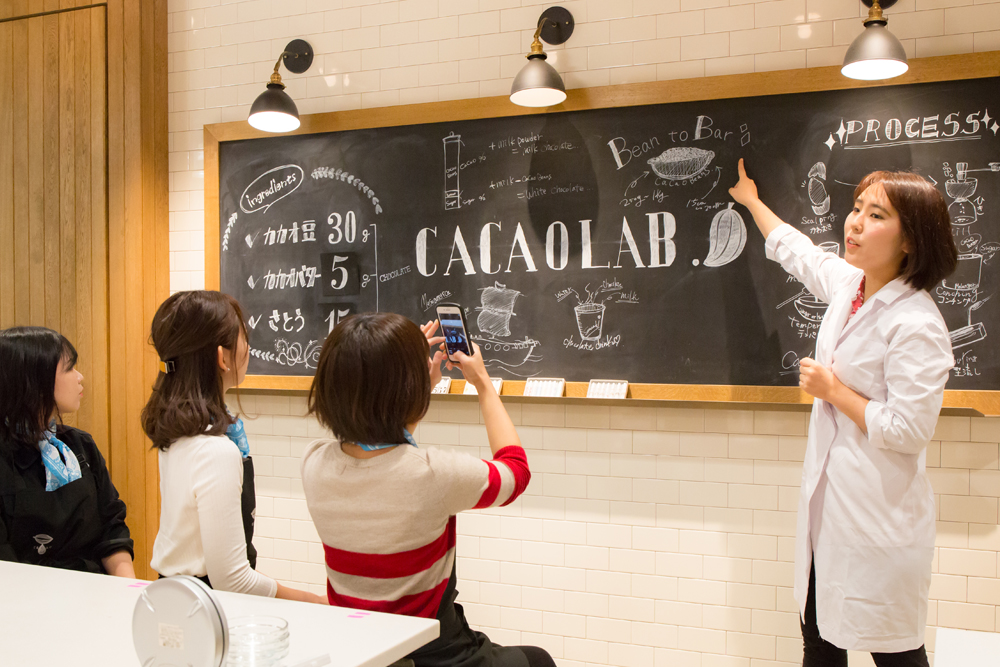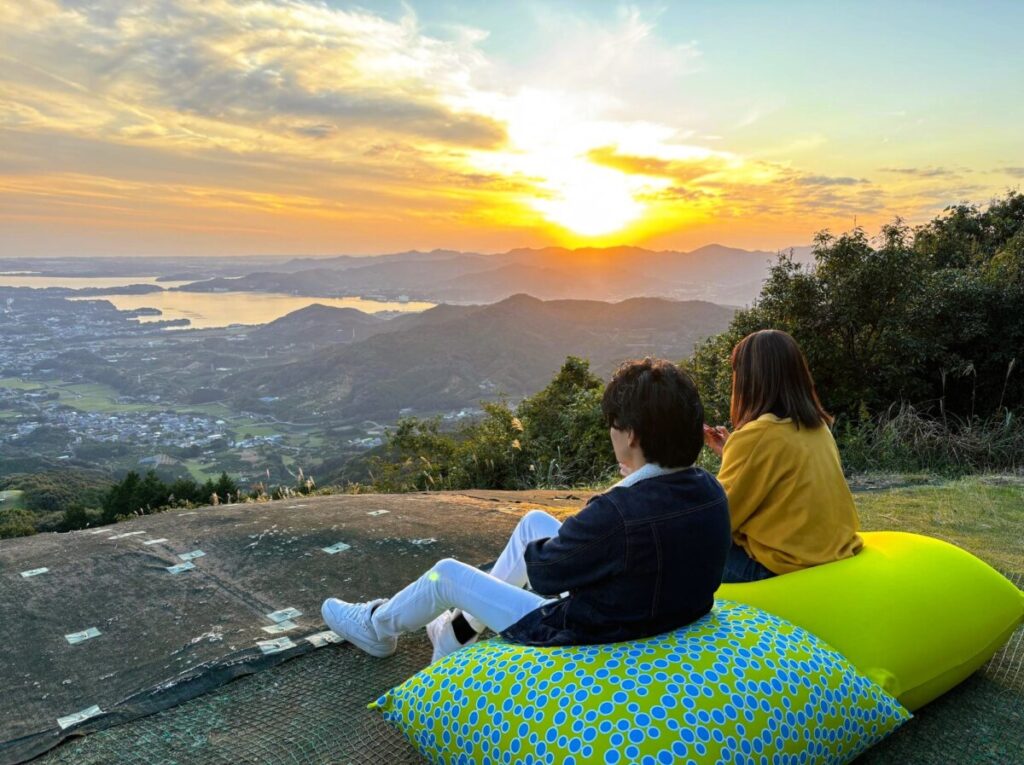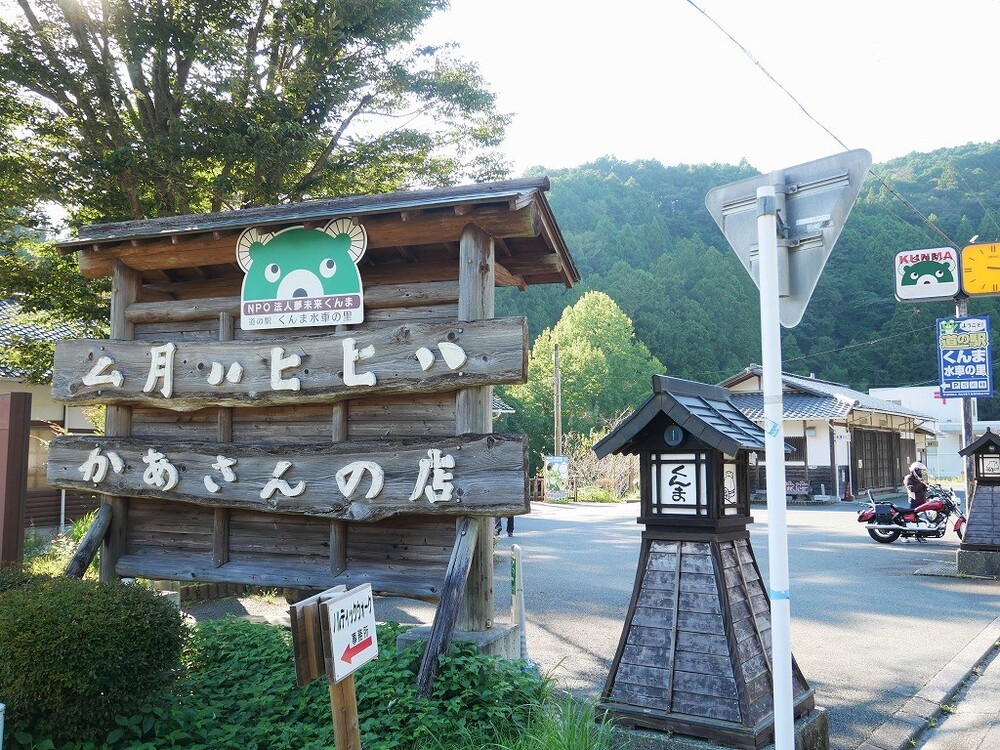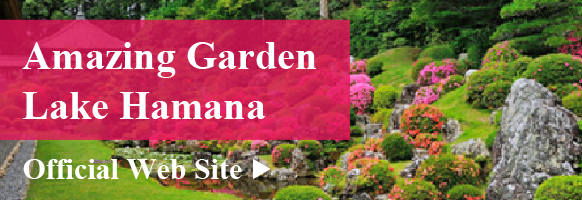Get to Know Hamamatsu
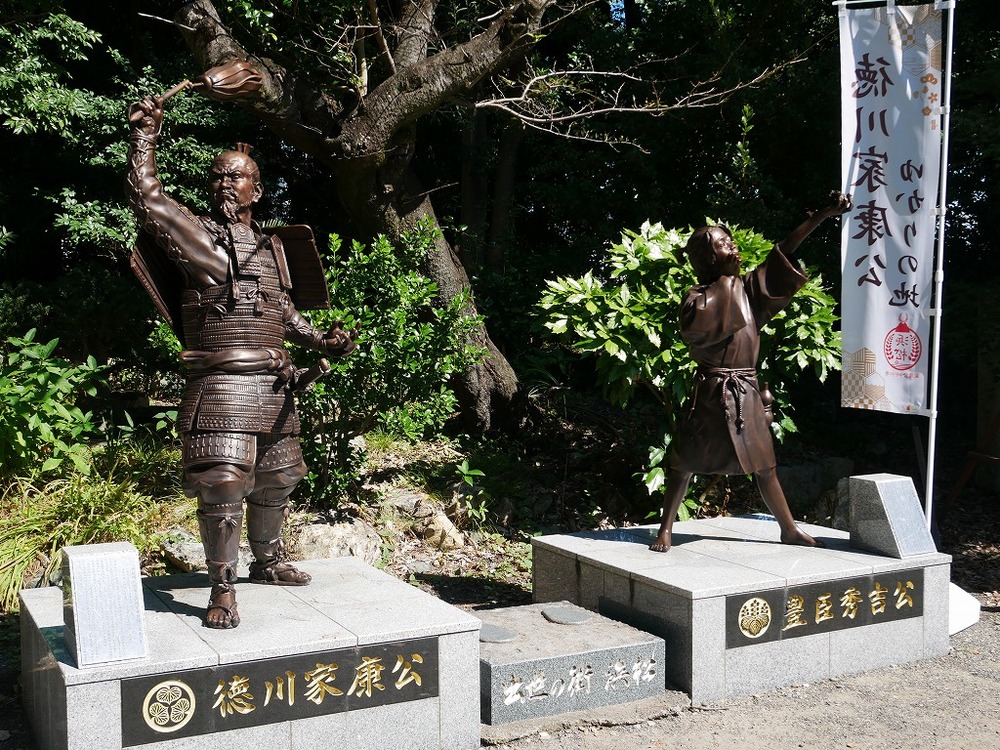
- Enjoy
- Watch
Walking around Hamamatsu Castle through places related to Lord Ieyasu/Ieyasu’s promenade (inside the castle/downtown route) Part 1
Hamamatsu is the place where Tokugawa Ieyasu, the main character of the 2023 historical drama “What to Do with Ieyasu” (NHK), spent 17 years of his youth. Therefore, the area around Hamamatsu Castle is dotted with places related to Lord Ieyasu.
The “Ieyasu Promenade” is a place where you can walk and visit places related to this. There are two walking routes: the “Battle Route” and the “Castle Inner/Castle Route.”
This time, we will take you around half of the “Castle Inner/Castle Route”, which is the east side of Hamamatsu Castle. Let’s set out with the leaflet in hand!
Start at Hamamatsu Castle
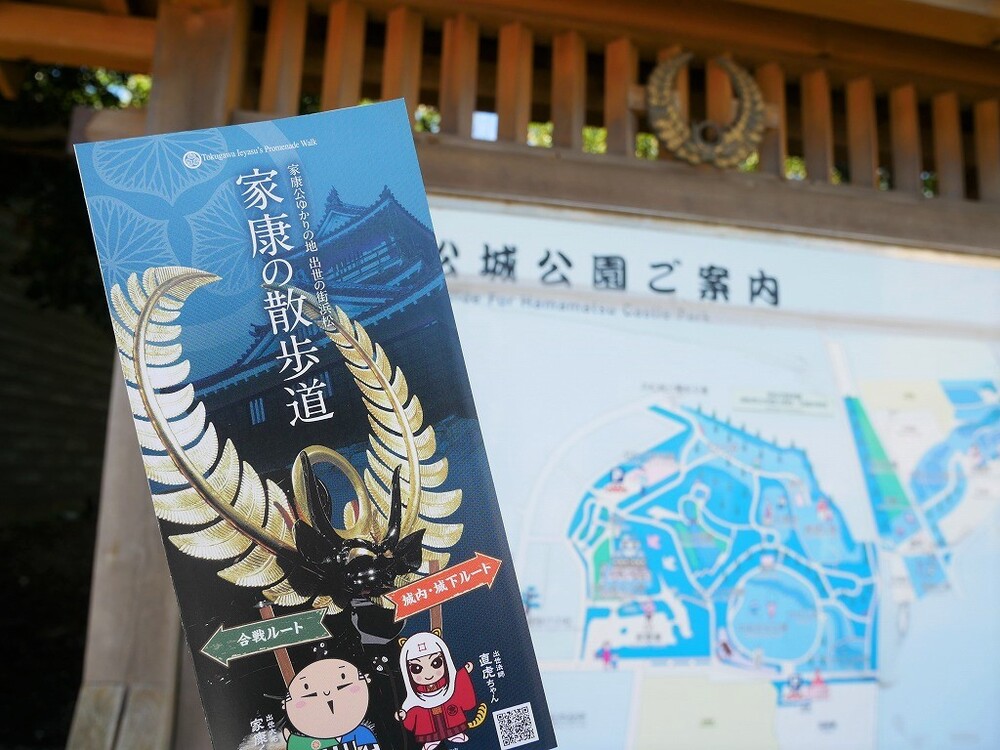
Tokugawa Ieyasu, who brought an end to the turbulent Sengoku period and established a 265-year period of peace, spent 17 years in Hamamatsu from the age of 27 to 45. It’s no wonder that the area around Hamamatsu Castle is dotted with places related to Lord Ieyasu.
This time, we will be walking through the first half of the “Castle Inner/Castle Route” of the 2 routes of “Ieyasu’s Promenade”. From the second point, Motoshiro Town Toshogu Shrine (Hikuma Castle Ruins), to the sixth point, Totomi Bunki Inari Shrine.
According to the leaflet, the estimated travel time for this part is approximately 26 minutes.
Departing from Hamamatsu Castle, the starting point of “Ieyasu’s Promenade,” we first headed to Toshogu Shrine in Motoshiro Town.
There are two ways to get from the castle to Motoshiro Town Toshogu Shrine: one that passes through National Route 152 between the city hall and the former site of Motoshiro Elementary School, and the other that runs via National Route 152 between Hamamatsu Castle Park and the parking lot. I chose the latter.
2nd point: Motoshiro Town Toshogu Shrine (Hikuma Castle Ruins)
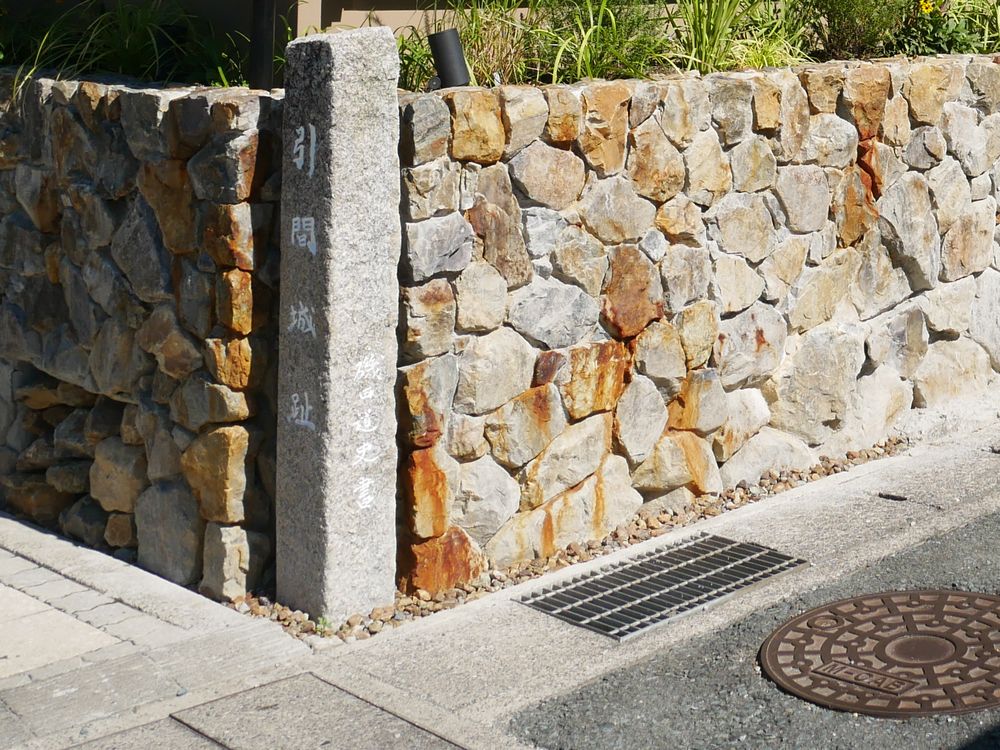
The landmark for Motoshiro Town Toshogu Shrine is the stone wall and the stone monument “Hikuma Castle”. Turn east at the corner of this building and go up the slope.
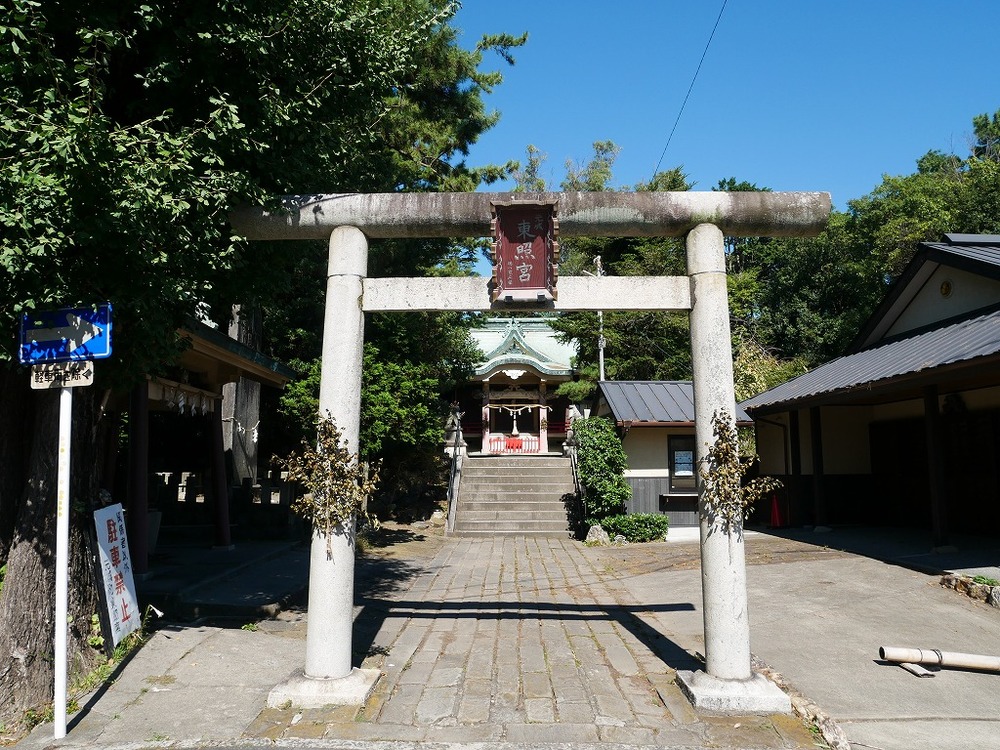
Turn the corner and go up the hill a little, and the torii gate of Motoshirocho Toshogu Shrine will appear on your left.
It was founded in 1886 (Meiji 19), and the deities enshrined are Kotoshironusi no Mikoto, Okuninushi no Mikoto, and Tokugawa Ieyasu. It is said to bring good fortune in business, marriage, and career advancement.
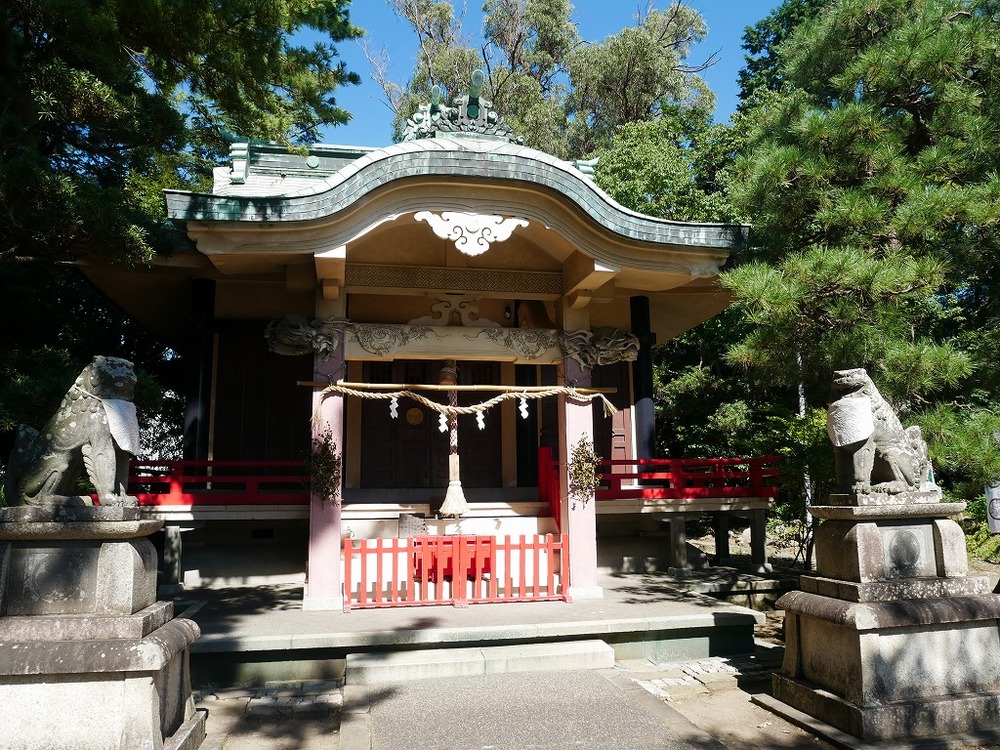
Before Lord Ieyasu entered Hamamatsu, this area was called “Hikuma”, and the Ino clan, a military commander from the Imagawa lineage, was the lord of Hikuma Castle.
Afterwards, Lord Ieyasu attacked Hikuma Castle and built Hamamatsu Castle southwest of it. Therefore, this place came to be called “Old Castle”.

After visiting the shrine, head to the statue of the second prince standing on the east side of the shrine.
The two princes are Tokugawa Ieyasu and Toyotomi Hideyoshi. Yes, this land is connected to two future Tenkabito. If you stand between them and take a commemorative photo, your luck in career advancement may improve! ?
3rd point: La Tsubakihime Kannon
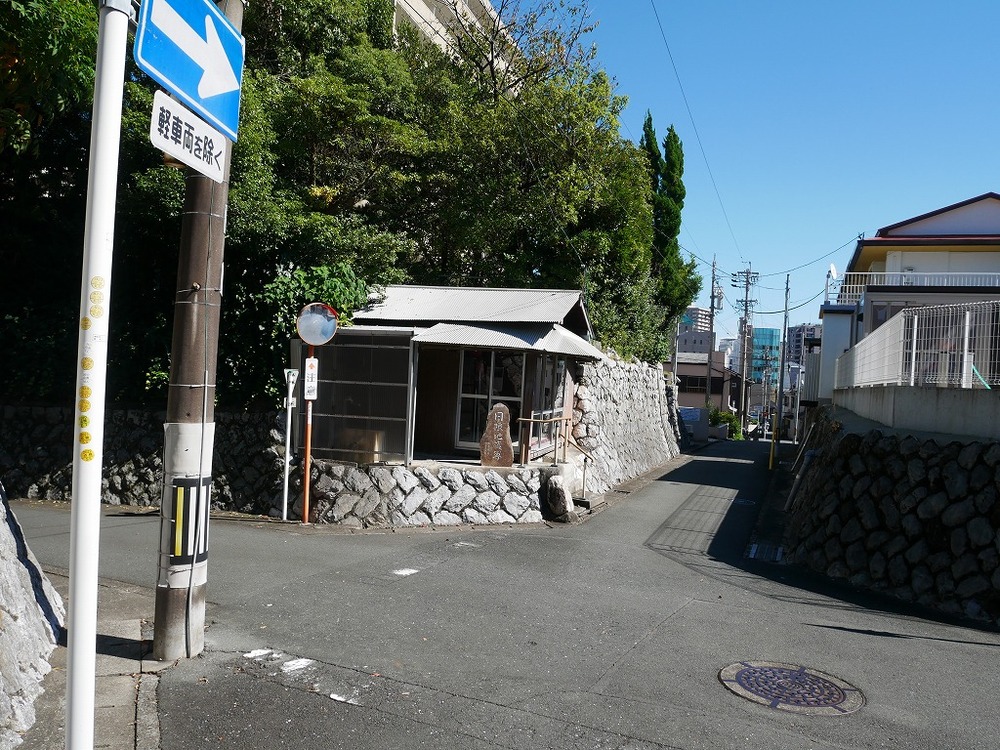
It is approximately 650 meters from Motoshirocho Toshogu Shrine to Tsubakihime Kannon, about 8 minutes on foot. Proceed through the intersection while zigzagging.
The photo above is the intersection at the end of the slope in front of Toshogu Shrine. Turn left here. The roads in this area use the moat of the old castle, so you can enjoy a walk while feeling the history.
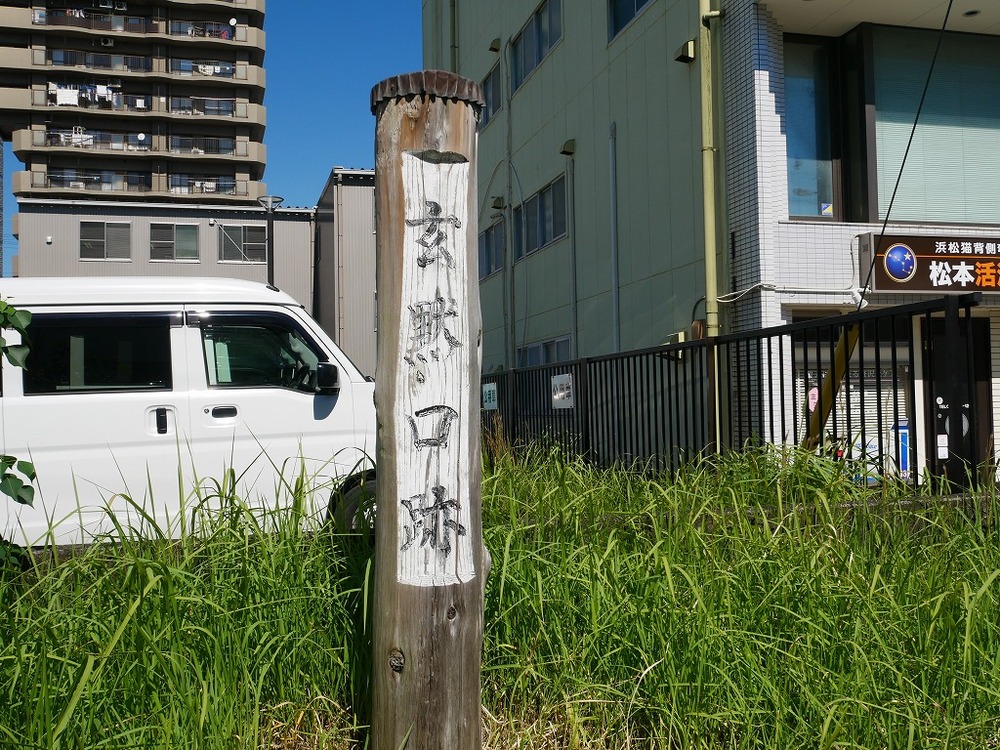
After turning left, turn right at the intersection about 60 meters ahead.
The landmark at the intersection is the white-looking Hamamatsu City Motome Branch Office building diagonally to the right. During the Sengoku period, this place was also written as “Genmoku,” and there was one of the entrances to Hamamatsu Castle, “Genmokuguchi.”
From the Genmokuguchi ruins, turn left at the intersection with the traffic light ⇒ Turn right ⇒ Turn left (Motohama Town) ⇒ Turn right and proceed northeast. When you see the Motohama Town Community Center on your right, you will soon see the Tsubakihime Kannon!
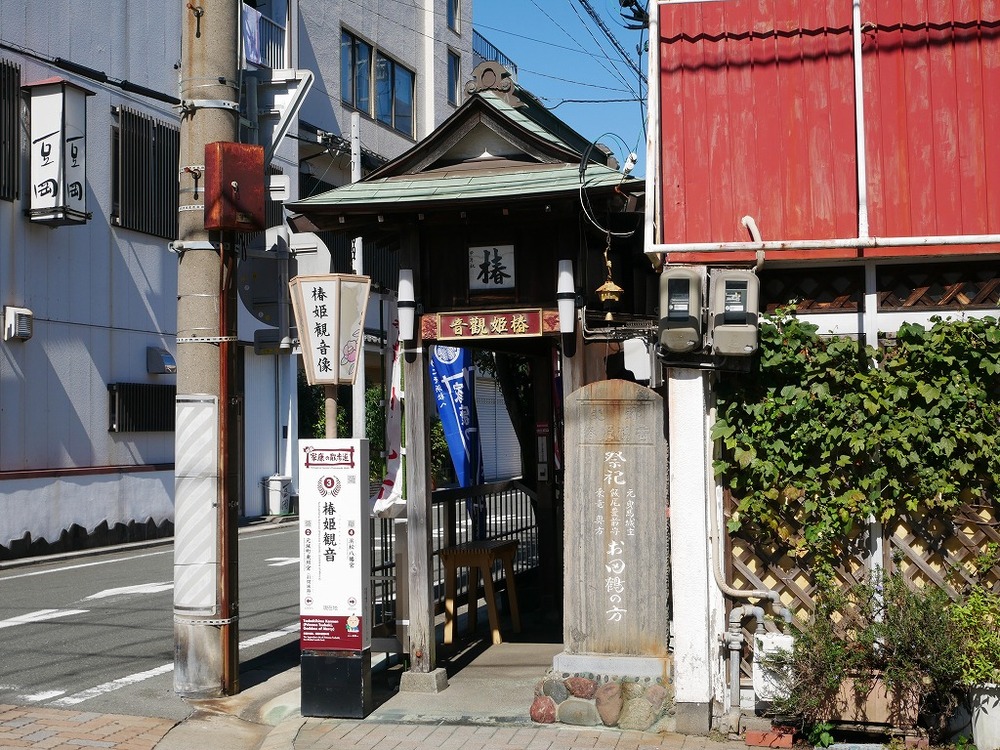
The person enshrined in Tsubakihime Kannon is Otazu, the wife of the lord of Hikuma Castle, Tsuratatsu Ino (some say it was Noritatsu).
After Tsuratatsu’s death, when Lord Ieyasu invaded Hikuma Castle, Otazu led his maids into battle. However, their efforts were in vain and the castle fell. It is said that Tsukiyama-dono, the legal wife of Lord Ieyasu, who mourned her death, planted camellias on the mound, and this is the origin of Tsubaki-hime Kannon-do.
After silently folding my hands and praying for peace in Hamamatsu, I took a short break on a bench inside Kannondo.
4th point: Hamamatsu Hachimangu Shrine
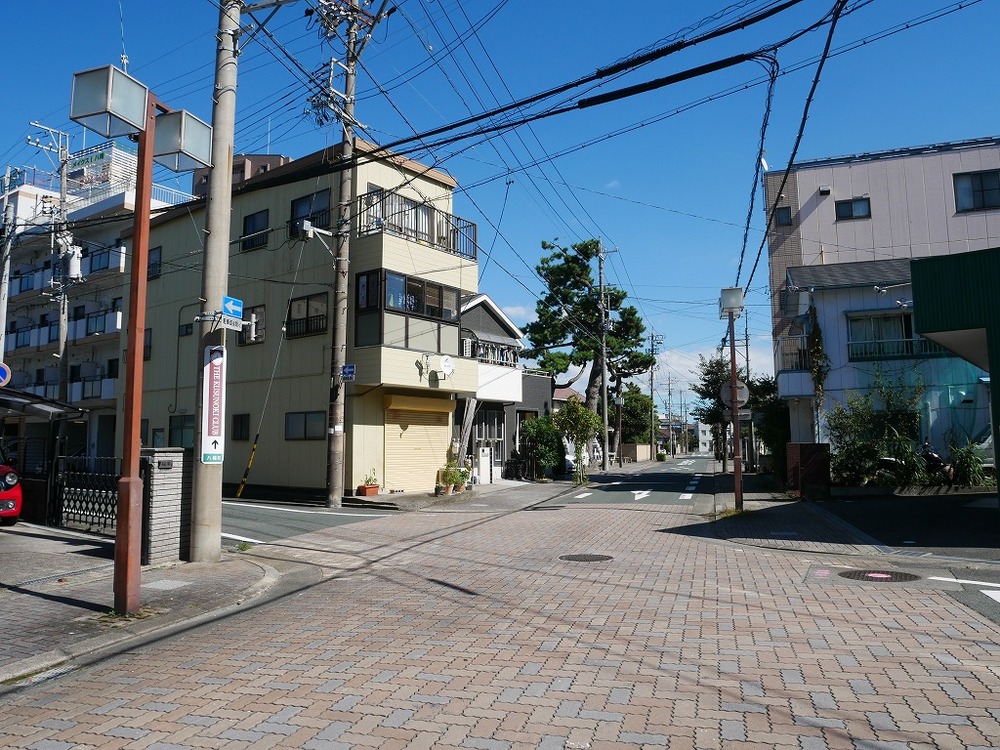
From Tsubakihime Kannon to Hamamatsu Hachimangu Shrine, it is a 5-minute walk, about 400 meters. Go under the Enshu Railway (Entetsu) viaduct and turn left at the first intersection (location in the photo above) ⇒ Turn right at the next intersection and it will be on your left.
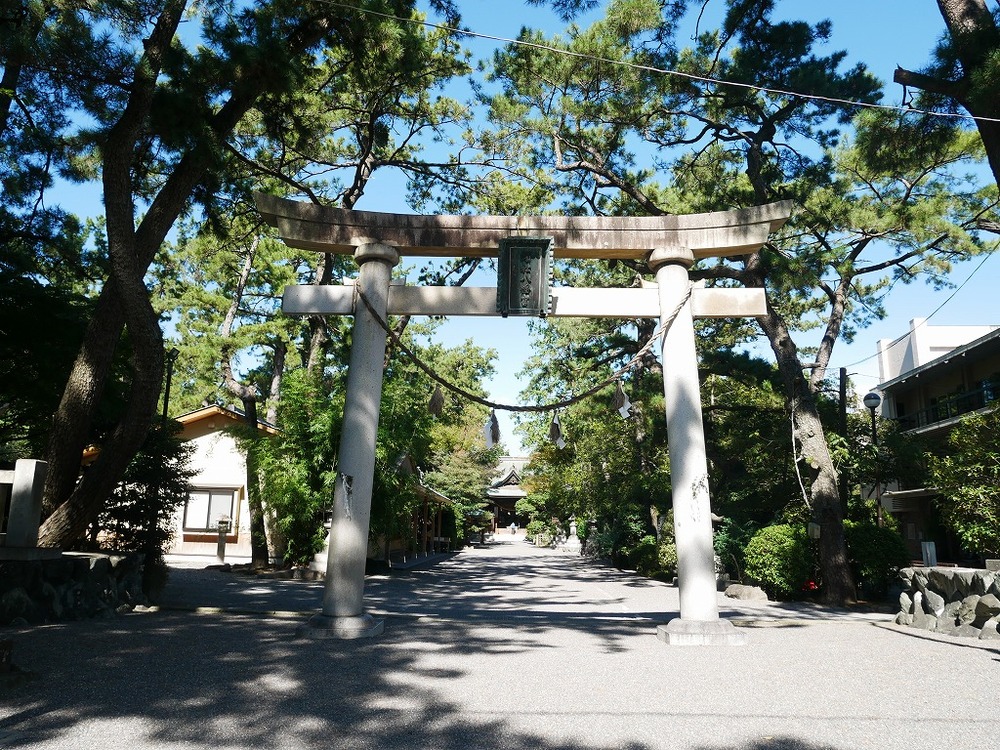
Hamamatsu Hachimangu Shrine was founded in the middle of the Heian period. Minamoto no Yoshiie (Hachiman Taro Yoshiie), a military commander active in the late Heian period, also visited the shrine and prayed for victory in battle.
The grounds are spacious and have an atmosphere away from the hustle and bustle of the surrounding area.
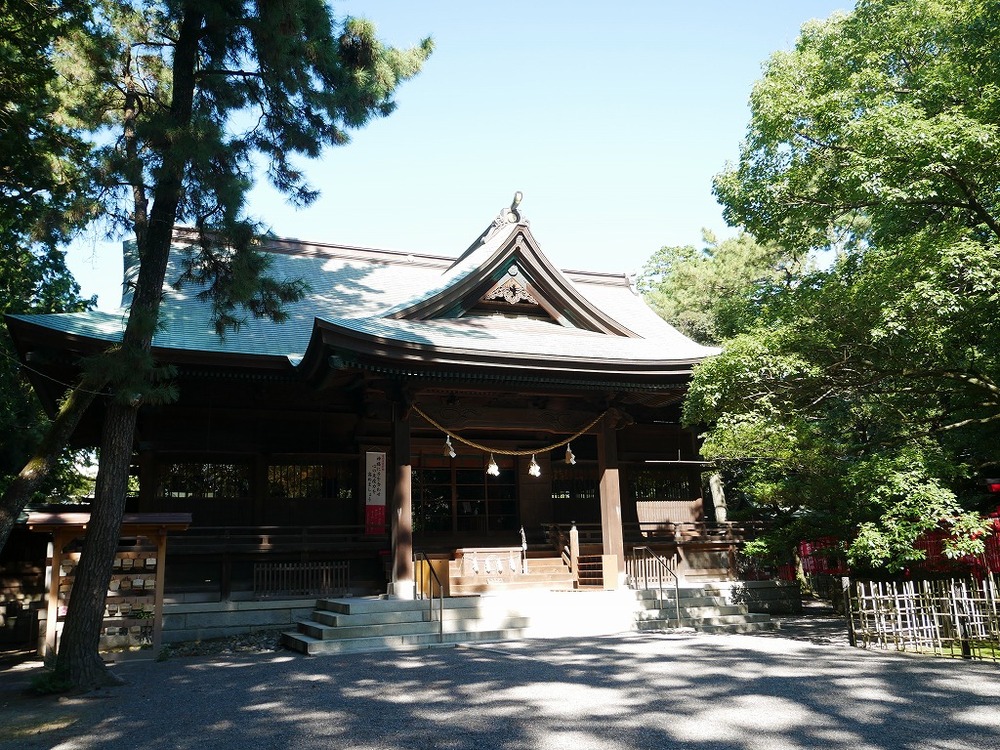
The deities enshrined are Tamayori Hime no Mikoto, Hondawake no Mikoto (Emperor Ojin), and Okinagatarashi Hime no Mikoto (Empress Jingu).
Hachimangami means Hondawake no Mikoto. He is known as the god of military luck and victory, and is deeply worshiped by military commanders.
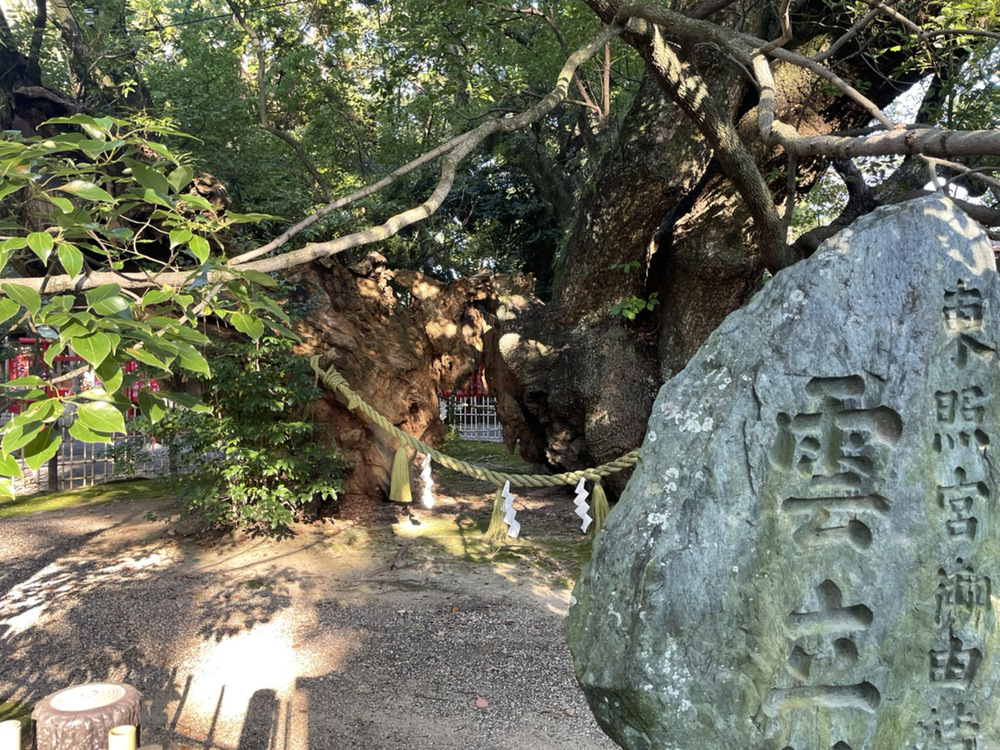
The Kumotachi no Kusu, which is associated with Lord Ieyasu, is on the front right side of the shrine.
Lord Ieyasu was defeated by the Takeda army in the Battle of Mikatagahara and hid himself in a cave at the bottom of the trunk of this camphor tree while fleeing back to Hamamatsu Castle.
At that time, clouds rose from the camphor tree and a divine spirit riding a white horse guided Ieyasu to Hamamatsu Castle. Because of these legends, this camphor tree came to be called “Kumotachi-no-kusu.”
This cave can still be seen today, so please take a look.
5th point: The well where Tokugawa Hidetada was born
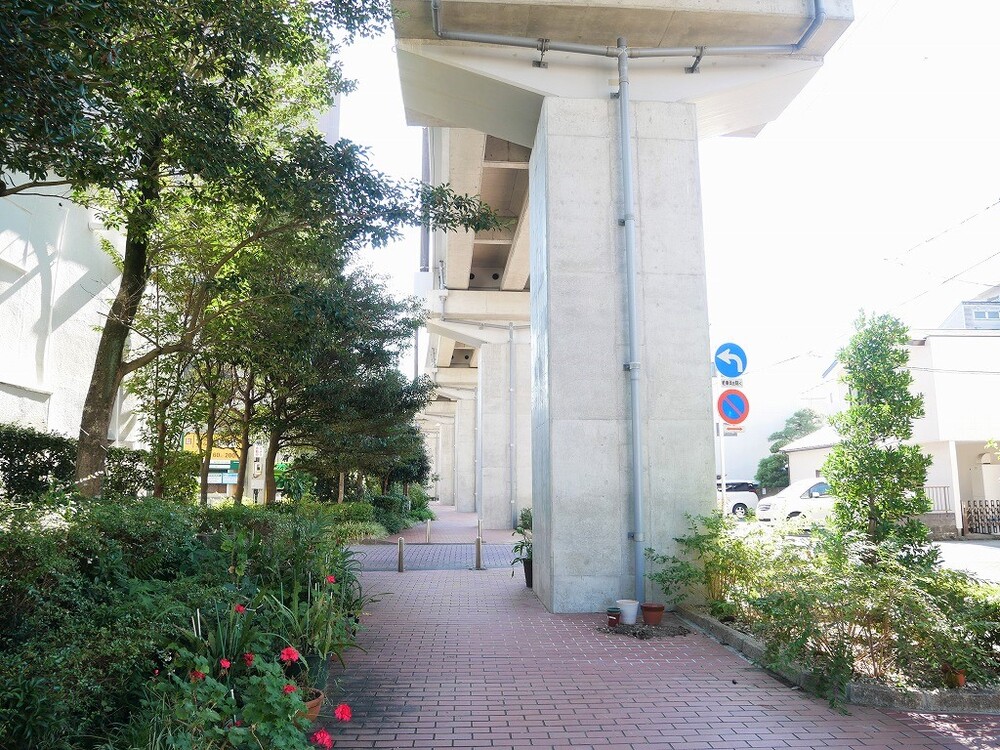
It is a 10-minute walk from Hamamatsu Hachimangu Shrine to the well where Tokugawa Hidetada was born, about 800 meters away. It’s a bit far, but the directions are easy.
This is because the Well of Birth is located near Enshu Hospital Station on the Entetsu line. Once you get to the bottom of the Entetsu viaduct, all you have to do is continue south.
There is a green path under the viaduct, and there are benches here and there.
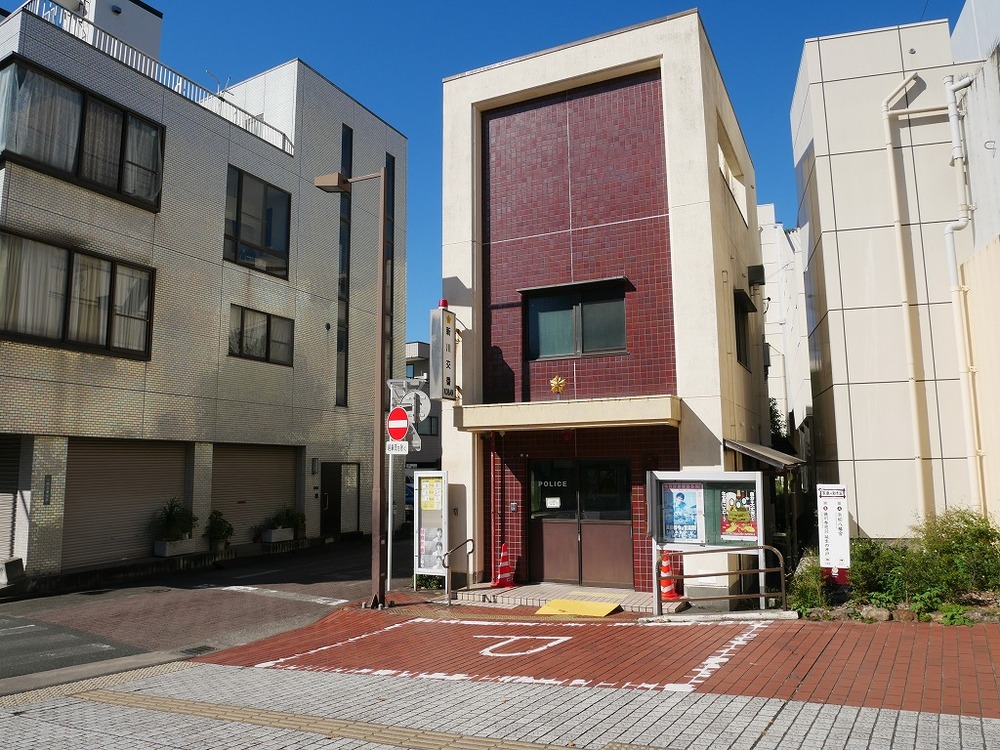
The birth well is right behind the Shinkawa Police Box of Hamamatsu Chuo Police Station. It is along the Entetsu viaduct. Let’s go around the police box from the left side as you face it.
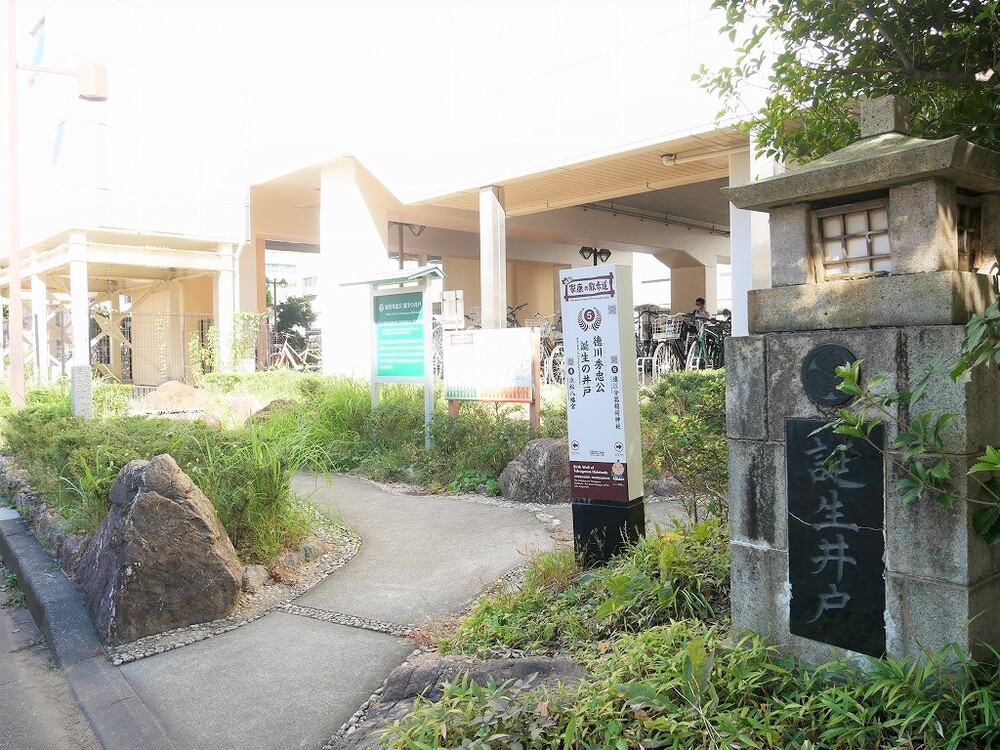
Lord Hidetada Tokugawa, the second shogun of the Edo shogunate, was born in 1579 (Tensho 7) as the third son of Lord Ieyasu. He was the only one of the 15 Tokugawa Shoguns born in Hamamatsu.
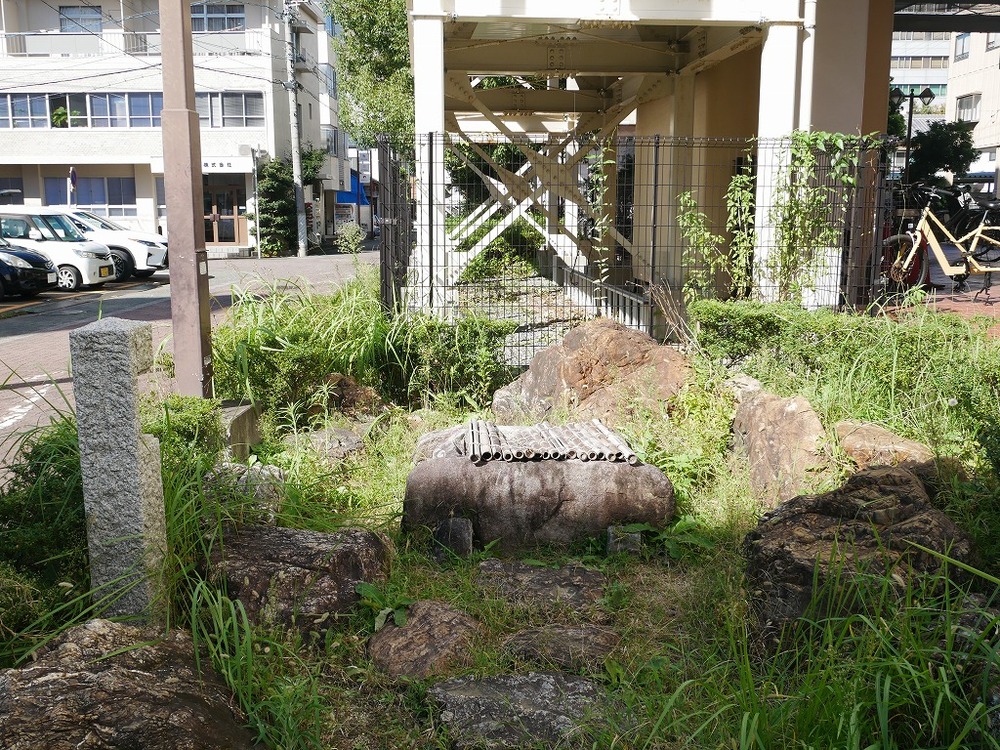
I would like to say that the well that was used as a birthing bath is in this place, but it is said that it may have been a well on the north side of Ninomaru, and the location has not been confirmed properly.
Was the birthing well for boys born during the Sengoku period located around here, or was it on the north side of Ninomaru? Which one do you think you were in?
*This birth well has been restored.
6th point/Bunki Inari Shrine
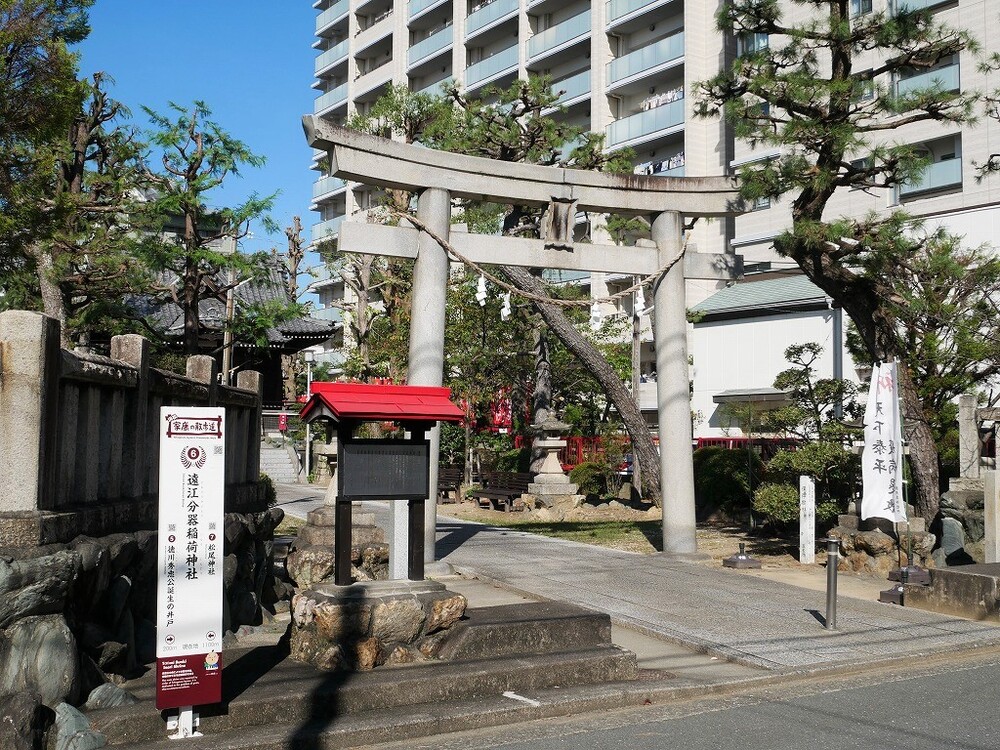
It takes about 200 meters and 3 minutes to walk from the well where Hidetada Tokugawa was born to Totomi Bunki Inari Shrine. This is the section with the shortest travel distance in the first half of “Ieyasu’s Promenade.”
According to legend, it was founded in 1568 (Eiroku 11) during the late Sengoku period. The deity enshrined here is the god of grain, Ukanomitama no Mikoto, who is said to bring good fortune to business.
Lord Ieyasu, who unified the country, ordered the construction of the main shrine in 1604 (Keicho 9), and thereafter it was revered by successive Tokugawa shoguns, the lords of Hamamatsu Castle, and various feudal lords. Nowadays, it is worshiped as the local deity.
This area was located at the southwest end of Hikuma-juku at that time.
This concludes the first half of the “Castle Inner/Castle Route” of “Ieyasu’s Promenade”. Thank you for your hard work. Let’s return to Hamamatsu Castle.
Plus α before returning to Hamamatsu Castle
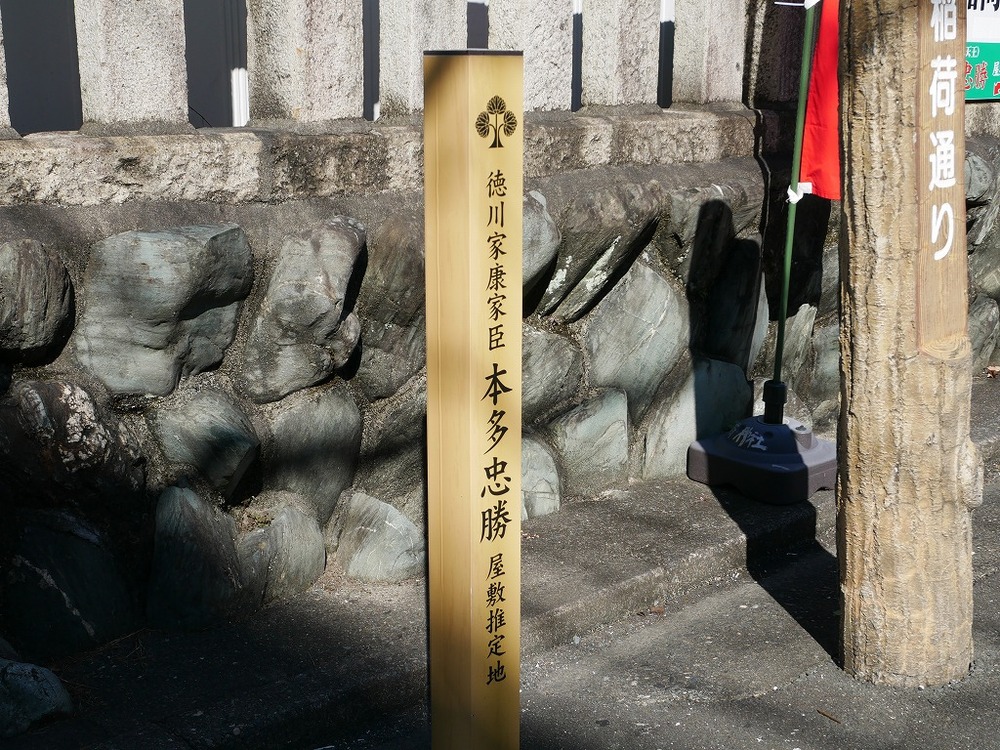
The longest walk from Totomi Bunki Inari Shrine to Hamamatsu Castle in the first half of this trip is about 950 meters, or 13 minutes. I decided to return while stopping at the two Ieyasu-related spots listed on the map in the leaflet.
The first place to visit is the monument next to Totomi Bunki Inari Shrine, marking the estimated site of Honda Tadakatsu’s residence.
Honda Tadakatsu was one of the Tokugawa Four Heavenly Kings. He was a brave military commander who ran around the battlefield, using one of the world’s three great spears, Tonbokiri.
It is less than 1 km from here to Hamamatsu Castle. Even if something happens in the castle, you can just jump on your horse! That’s right.
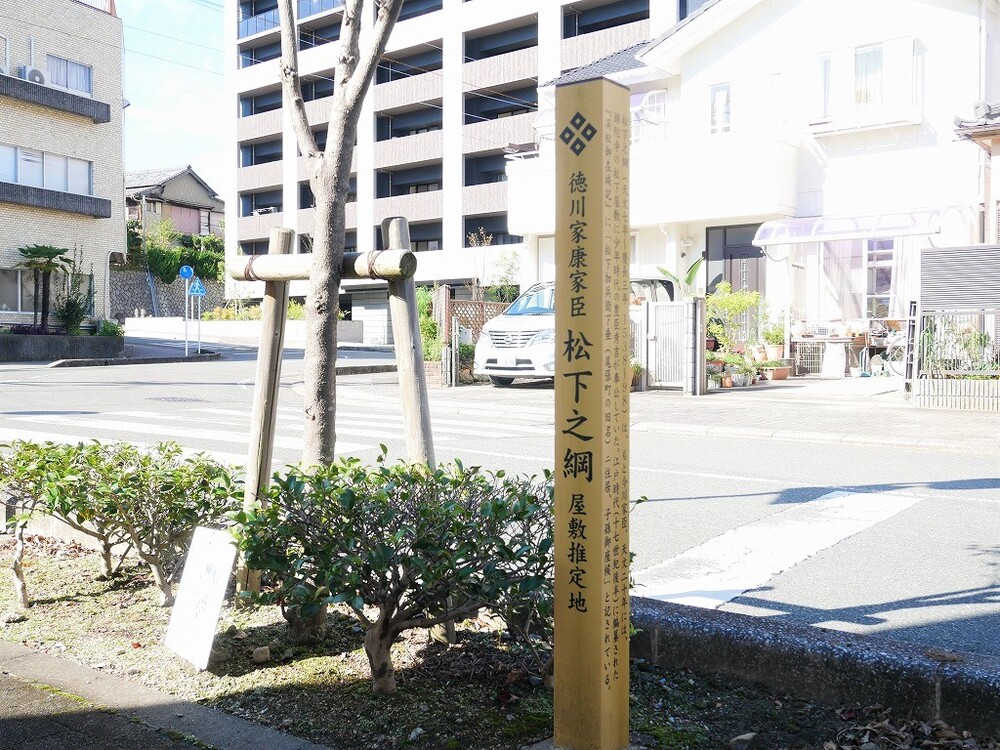
The second place is a monument that marks the estimated site of Matsushita no Tsuna’s mansion, located approximately 500 meters northwest of the estimated site of Honda Tadakatsu’s residence and a 6-minute walk.
Matsushita Yukitsuna, the lord of Zudaji Castle in Minami Ward, Hamamatsu City, changed masters several times, and his master before serving Lord Ieyasu was the Imagawa clan.
As a boy, Toyotomi Hideyoshi met Yukitsuna when the Imagawa clan was its lord, and he took him to visit Hikuma Castle. After that, he served as a samurai under Yukitsuna.
It was for this reason that a statue of Hideyoshi as a boy (on the right side when facing the second statue) was erected at Toshogu Shrine in Motoshiro Town.
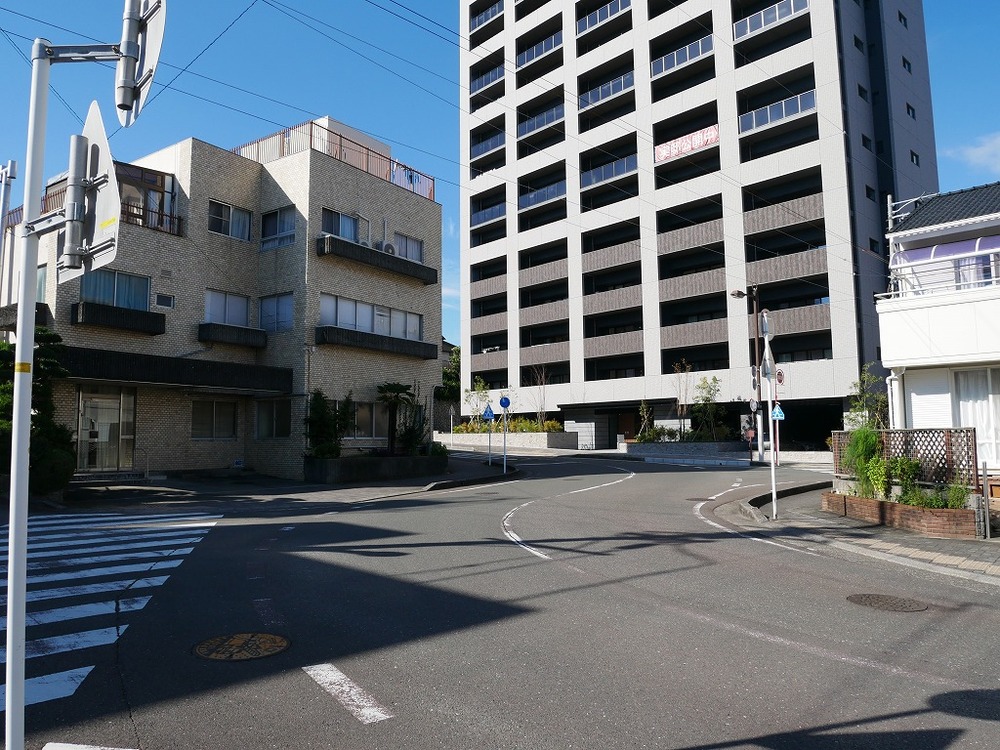
Although it is not specifically mentioned in the leaflet, there is another topography just diagonally ahead of us that still retains the features of those days. That is the location in the photo above, Shimodare-guchi.
This crank is called a “discrepancy” and is a road construction seen in castle towns during the Sengoku period.
If you cross the roads normally, it will be a straight line to the castle. Instead, it was better to bend them like this to prevent enemy invasion, so they were built in castle towns all over the country.
It is the only remaining defensive structure in Hamamatsu Castle.
The first half of the “Castle Inner/Castle Route” of “Ieyasu’s Promenade” can be covered in half a day, including the time to visit each spot.
Take a leisurely walk through history while preparing for “What to do with Ieyasu”!
“Ieyasu’s Promenade” web version leaflet (opens in a new window)▼
Ieyasu’s promenade leaflet (web version)
